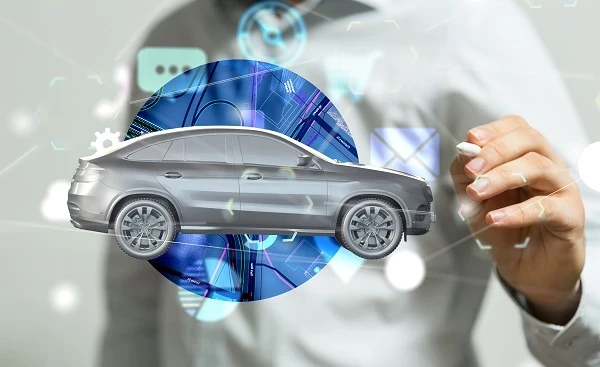Top Five: Groundbreaking moments on the way to self-driving cars
Charting some of the breakthroughs on the way to Level 5
Add bookmark
After calling out the challenges of carsharing last week, we decided to seek a more positive angle for our latest Top Five.
The journey to autonomy isn’t without its own bumps in the road, and there is still a distance to travel to ensure that the technology is safe, secure and capable of coping with all that life can throw at it.
However, we thought we chart how far we have already come, from what seemed like science fiction just a few decades ago, to Level 4 and Level 5 self-driving vehicles now testing on public roads.
#1 – The First ‘Driverless’ Car

It sounds like the work of the contemporary magician, Harry Houdini, but the Houdina radio-controlled American Wonder (above)took to the streets of Manhattan as far back as 1925. The car’s acceleration, braking and steering were all taken care of by radio control from a chase car.
The idea of a properly self-driving vehicle reemerged at the 1939 World’s Fair. GM commissioned industrial designer Normal Bell Geddes to create the spectacular-sounding Futurama exhibit that featured the automated highway as its centerpiece.
Again, the idea used radio control, but this time with coils embedded in the roadway, that could signal a car to turn right or left. GM built a working prototype in the late 1950s, too.
#2 – No Hands Across America

Fast-forward to 1995, and two researchers from Carnegie Mellon University’s Robotics Institute, Todd Jochem and Dean Pomerleau, "drove" 2,797 of the 2,849 miles from Pittsburgh, PA, to San Diego, CA, using the Rapidly Adapting Lateral Position Handler (RALPH) computer program.
RALPH used video images to determine the location of the road ahead and the appropriate steering direction to keep the vehicle, a specially modified 1990 Pontiac Trans Sport minivan, on the road. The researchers handled the throttle and brake. Both Jochem and Pomerleau are tech entrepreneurs in the autonomous driving sector today.
#3 – DARPA Challenge

The Defense Advanced Research Projects Agency (DARPA) created the Grand Challenge to accelerate the development of autonomous vehicle technologies for military applications.
It ran on March 13, 2004, with a 150-mile route from Barstow, CA, to Primm, NV. However, none of the 15 vehicles entered completed the course. In fact, the team from Carnegie Mellon, and its converted Humvee called Sandstorm, managed the furthest distance of just 7.32 miles, so no one claimed the $1m prize.
A year later, on October 8, 2005, a second Grand Challenge was contested over a 132-mile course. All but one of the 23 vehicles that entered managed more than 7.32 miles, and five vehicles completed the whole course.
Stanford Racing Team won the Challenge with its VW Touareg called Stanley, and they scooped $2million for finishing the event in a time of 6 hours, 53 minutes.
The final DARPA Urban Challenge was held on November 3, 2007, at the former George AFB in Victorville, CA. The event comprised 60 miles of urban driving, with Boss, the Chevrolet Tahoe-based entry from Carnegie Mellon Team winning the $2m prize, 19 minutes ahead of Stanford University’s entry, the VW Passat-based Junior. Six cars of the 11 entered finished the course.
#4 – Mercedes F015 envisions the future

In a time where concept cars are rarely no more than the production car with video cameras for side mirrors, the Mercedes F015 Luxury in Motion was a total breath of fresh air.
While its design was relatively conservative, its technology previewed the autonomous future we’d all been waiting for, including a lounge-like interior, complete with touchscreen door panels; exterior lighting that could communicate messages to pedestrians; and – importantly – Level 5 autonomy that you could take for granted.
Unlike regular show cars, which are often the main event at an auto show, the F015 was first shown at CES 2015 in Las Vegas, signaling the switch that many automakers have since attempted from builder of cars to smart mobility providers.
#5 – Tech firms bring the future to life

Although it was Mercedes that set the tone for autonomy, the tech firms are doing their best to make it happen.
Google began working to build autonomous Toyota Prius’ that could complete a 100-mile route unaided back in 2009, hiring a host of engineers with experience from the DARPA Challenges. The firm added its steering wheel-less Firefly vehicle in 2015. The company was spun into Waymo in 2016, and has continued to develop its tech since.
Apple also confirmed its Project Titan self-driving car project. Little is known about the project, aside from the fact that it began in 2014, and has been reconfigured in its aims a number of times, from developing a full car, to just the autonomous tech.
Uber would rather its self-driving project had been a little more under the radar when one of its autonomous Volvo XC90 test cars struck and killed a pedestrian.
However, the development goes on. Via its Advanced Technology Group, staffed by a host of Carnegie Mellon alums, Uber plans to offer robotaxis that drive safely and remove a significant cost – the driver – from its business model.
Last up, Tesla is technically a car firm but its approach is a little more like a tech company, particularly when it comes to openly testing its Autopilot ADAS in public to acquire vast quantities of real-world data in double-quick time. Full self-driving is likely to be offered soon, priced from $7,000.
#6 and upwards is up to you…






























